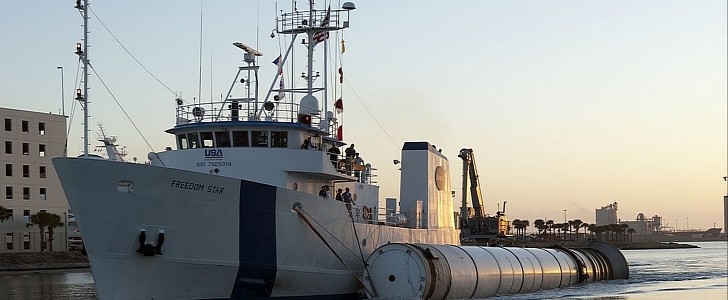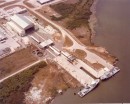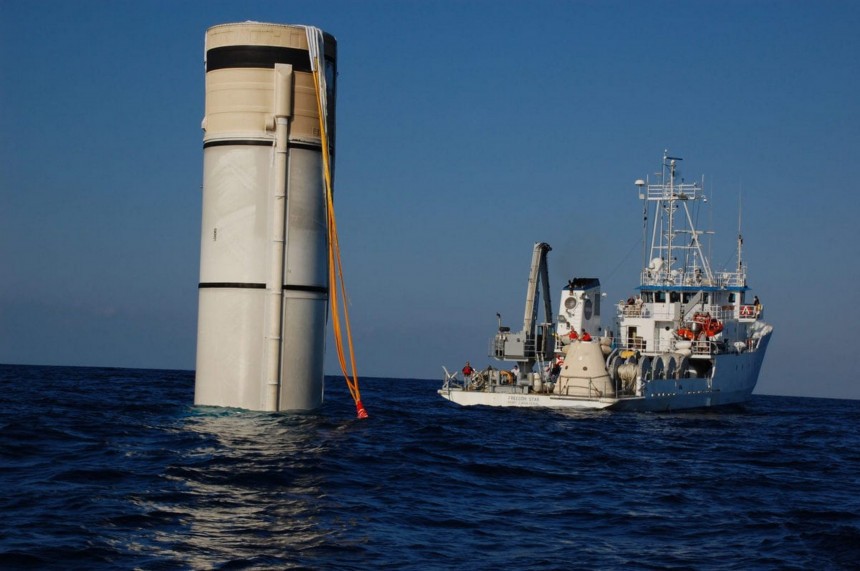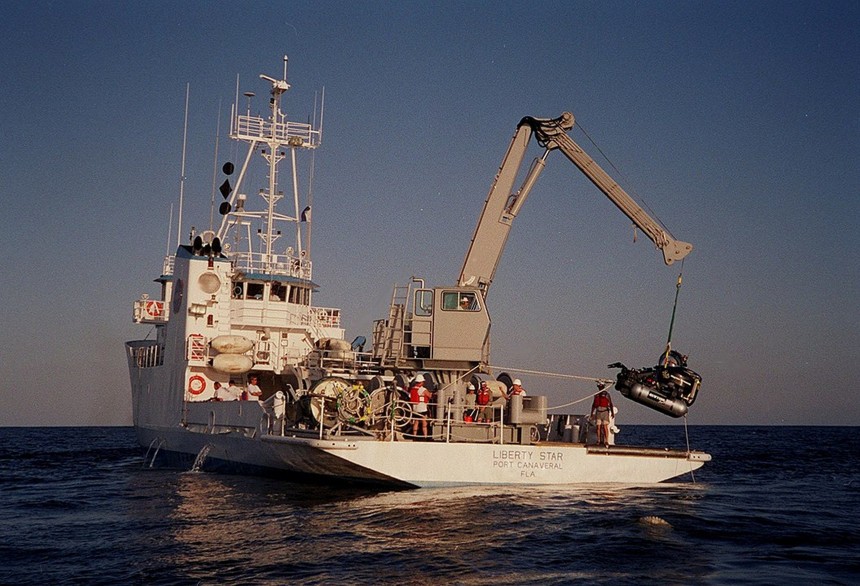You're bound to see a slew of different seafaring vessels during autoevolution's Sea Month. Cargo ships, pleasure yachts, megayachts, flying boats, and anything else that floats on the world's oceans (or the oceans of another world). But of all the cargo a ship could carry, the MV Liberty Star and the MV Freedom Star have one of the more special ones.
These are the twin ships that venture out off the coast of Florida's Kennedy Space Center to retrieve vital solid rocket boosters after they've spent their considerable fuel stores bringing America's astronauts aboard the Space Shuttles and starting very soon, the brand new Space Launch System (SLS). Don't let their ordinary appearances fool you. The Liberty Star and the Freedom Star have the goods under the hood to tow some pretty insane loads.
Built by the same manufacturers at Atlantic Marine Shipyard, Fort George Island near Jacksonville, Florida, these two ships used a complex system of two main diesel engines jetting 2,900 hp and two waterjet auxiliary engines to create a drivetrain robust enough to haul a crew of up to 24 personnel at speeds of 15 knots (28 km/h; 17 mph) when unladen.
Granted, its top speed is bound to be less when there are 60,000 pounds (27,215.54 kg) of payload in tow beside either ship. The auxiliary jets serve a secondary purpose of propelling both vessels through coastal ocean waters without harming any of the sensitive biodiversity native to the Florida coast.
By extension, it also does the job of towing cargo up the Banana River near the Kennedy Space Center through the Canaveral Barge Canal built by the U.S. Army Corps of Engineers without harming the vibrant manatee population much easier.
Once a solid rocket booster detaches from its mothership spacecraft and floats back town to Earthly waters, the MV Liberty Star and the MV Freedom Star's crews sprint into action. Sailing full steam ahead towards the parachuting boosters and using minute-by-minute GPS coordinates to track its trajectory into the water below.
Once the ships arrive at their respective SRBs, and remember, they usually fly in pairs of two, they use a slew of onboard equipment to secure the boosters to the hind quarters of the two ships. From there, the SRBs begin their transit back to the Cape.
This kit includes a 7,500-pound (3,401 kg) crane and a system of pumps for forcing vast quantities of seawater out of the interior of the solid rocket booster. MV Liberty Star, in particular, was fitted with a Weibel Scientific Continuous Pulse Doppler X-band radar to provide a detailed analytical account of a target SRBs trajectory from spacecraft separation to when its parachutes finally settle down in the water.
Such research is vital for coordinating space debris recovery operations in future launches. From the early 1980s through the year 2011, MV Liberty Star and the MV Freedom Star served alongside the American Space Shuttle programs.
During this time, the ships retrieved all of the spent solid rocket boosters launched from launch complexes at Kennedy Space Center. Apart from the loss of the Space Shuttle Challenger in January 1986, the ships were successful in bringing their target cargo back to shore.
During this time, both ships underwent expensive hull and frame reinforcement modifications. These ensured their superstructures stayed strong enough to tow their precious and heavy SRB cargo without future issues.
The twin ships were also tasked with transporting Space Shuttle SRBs from their manufacturing facility in New Orleans, Louisiana, to the colossal Vehicle Assembly Building at the Kennedy Space Center for mounting on either side of the main fuel tank.
Outside of the shuttle program, NASA's taken the liberty of using both MV Liberty Star and MV Freedom Star in other important matters. On October 28th, 2009, the ships were called upon to recover the spent remains of the Ares I-X experimental booster rocker under the Constellation mission initiative. As it happens, the Ares rocket derived a significant portion of its booster technology from the old Shuttle SRB program.
Constellation would be canceled by Congress in 2010 and take another form with the current Artemis program and its main booster rocket, the Space Launch System. Indeed, it's in service to the Artemis program, to which the MV Liberty Star and the MV Freedom Star will dedicate the majority of their time going forward.
With its first launch, the uncrewed Artemis I mission slated for launch on August 29th of this year, it's only a matter of time before the two ships are called once again to do what they do best. Forty years on, they still do it as if they just left their shipbuilders yesterday.
Stay tuned for more from Sea Month here on autoevolution.
Built by the same manufacturers at Atlantic Marine Shipyard, Fort George Island near Jacksonville, Florida, these two ships used a complex system of two main diesel engines jetting 2,900 hp and two waterjet auxiliary engines to create a drivetrain robust enough to haul a crew of up to 24 personnel at speeds of 15 knots (28 km/h; 17 mph) when unladen.
Granted, its top speed is bound to be less when there are 60,000 pounds (27,215.54 kg) of payload in tow beside either ship. The auxiliary jets serve a secondary purpose of propelling both vessels through coastal ocean waters without harming any of the sensitive biodiversity native to the Florida coast.
By extension, it also does the job of towing cargo up the Banana River near the Kennedy Space Center through the Canaveral Barge Canal built by the U.S. Army Corps of Engineers without harming the vibrant manatee population much easier.
Once the ships arrive at their respective SRBs, and remember, they usually fly in pairs of two, they use a slew of onboard equipment to secure the boosters to the hind quarters of the two ships. From there, the SRBs begin their transit back to the Cape.
This kit includes a 7,500-pound (3,401 kg) crane and a system of pumps for forcing vast quantities of seawater out of the interior of the solid rocket booster. MV Liberty Star, in particular, was fitted with a Weibel Scientific Continuous Pulse Doppler X-band radar to provide a detailed analytical account of a target SRBs trajectory from spacecraft separation to when its parachutes finally settle down in the water.
Such research is vital for coordinating space debris recovery operations in future launches. From the early 1980s through the year 2011, MV Liberty Star and the MV Freedom Star served alongside the American Space Shuttle programs.
During this time, both ships underwent expensive hull and frame reinforcement modifications. These ensured their superstructures stayed strong enough to tow their precious and heavy SRB cargo without future issues.
The twin ships were also tasked with transporting Space Shuttle SRBs from their manufacturing facility in New Orleans, Louisiana, to the colossal Vehicle Assembly Building at the Kennedy Space Center for mounting on either side of the main fuel tank.
Outside of the shuttle program, NASA's taken the liberty of using both MV Liberty Star and MV Freedom Star in other important matters. On October 28th, 2009, the ships were called upon to recover the spent remains of the Ares I-X experimental booster rocker under the Constellation mission initiative. As it happens, the Ares rocket derived a significant portion of its booster technology from the old Shuttle SRB program.
With its first launch, the uncrewed Artemis I mission slated for launch on August 29th of this year, it's only a matter of time before the two ships are called once again to do what they do best. Forty years on, they still do it as if they just left their shipbuilders yesterday.
Stay tuned for more from Sea Month here on autoevolution.
















